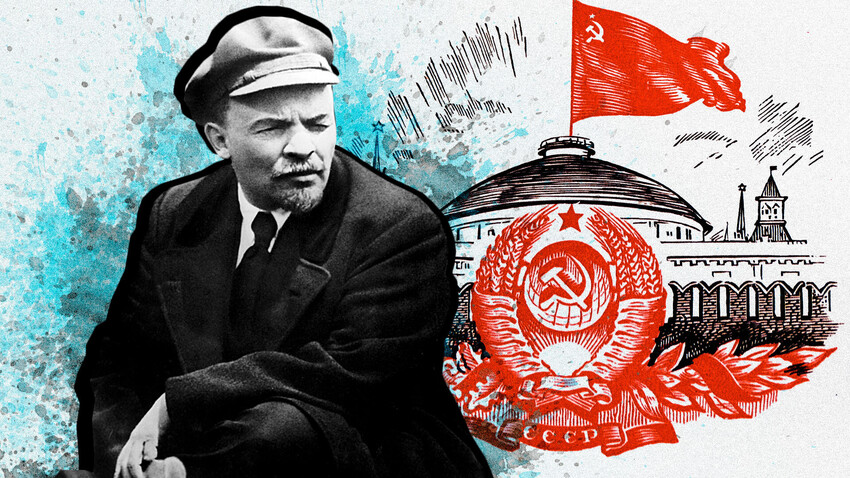
As an experienced leader and underground revolutionary, Lenin thoughtfully left the place of formal leader of the Soviet state to others. What position did he occupy, then? To understand this issue, it’s important to look at how the October Revolution radically changed Russia’s state system.
In October-November 1917 in Petrograd (as St. Petersburg was known during World War I), there were two major political powers – the Provisional Government headed by Alexander Kerensky that was based in the Winter Palace, and the Petrograd Military-Revolutionary Committee headed by Leon Trotsky that was based in the building of the Smolny Institute (simply referred to as the Smolny).
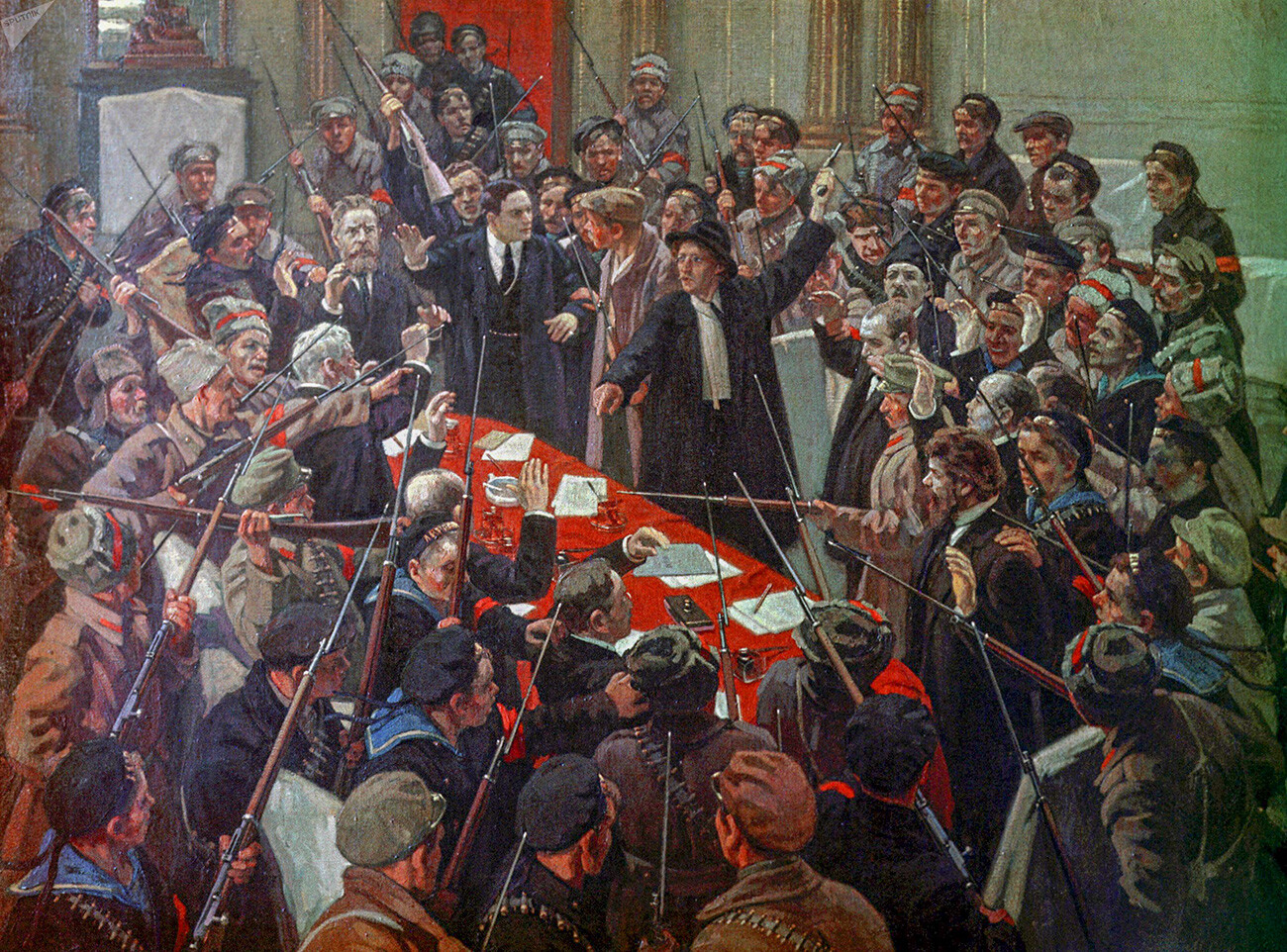
«Arrest of the Provisional Government»
Mikhail SokolovOn November 6-7 1917, the Military-Revolutionary Committee issued a statement denouncing the Provisional Government and its actions. The Bolsheviks seized control of communications centers throughout Petrograd, capturing the Central Telegraph and telephone stations. At the same time, a flotilla of 45 destroyers loyal to the Bolsheviks arrived in the city’s harbor.
In the early hours of November 8, 1917, the Winter Palace was stormed by the revolutionaries and the Provisional Government was arrested. Already by this moment, the Second All-Russian Congress of Soviets of Workers and Soldiers Deputies was underway in Smolny.

The Smolny Institute for Noble Maidens, which in the days of the October Revolution was the headquarters of the Bolsheviks.
Public domainLenin proposed that the Congress should elect the All-Russian Central Executive Committee – the highest government body in the country – and also form a provisional workers and peasants government – the Council of People's Commissars.
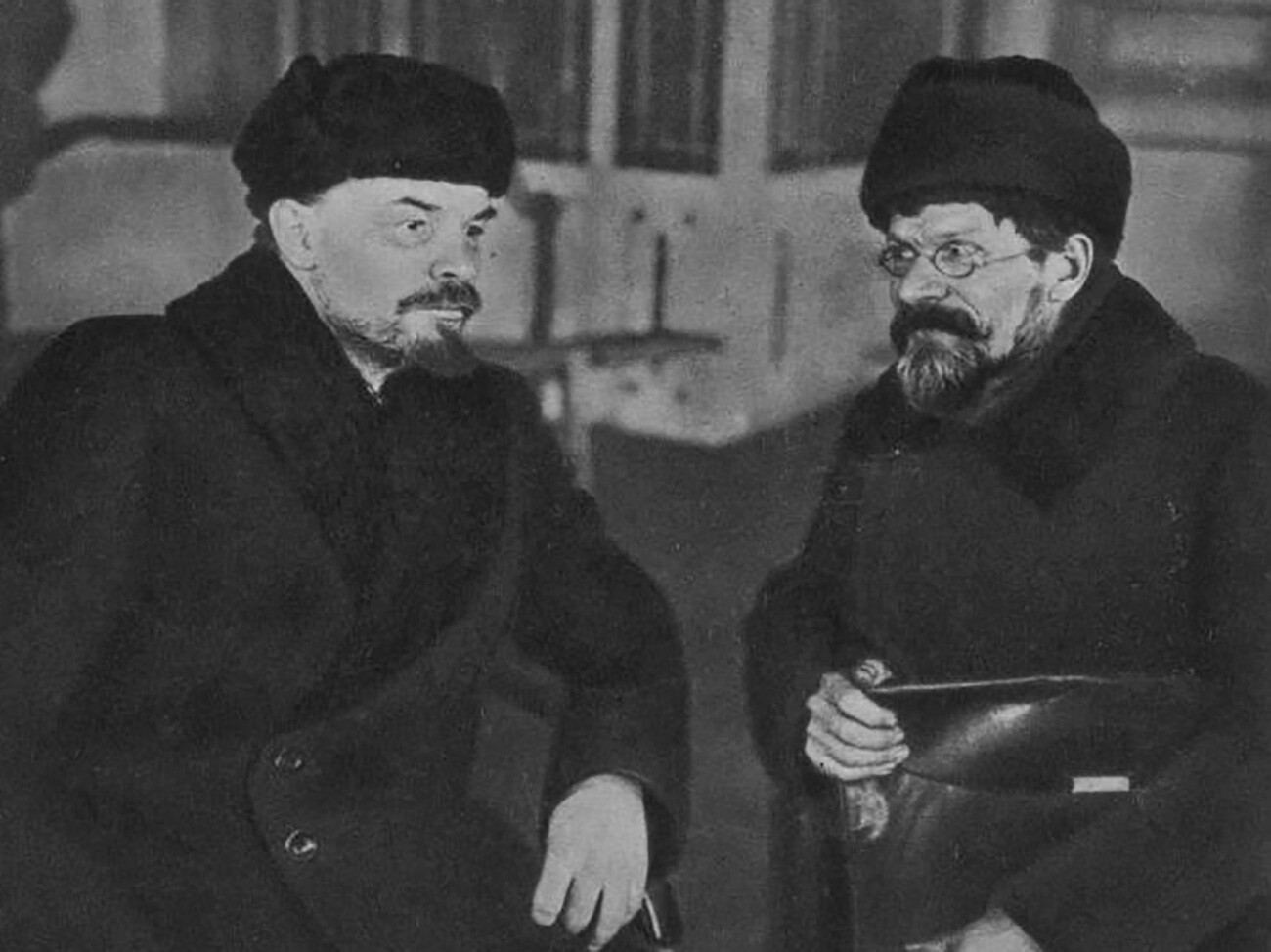
Vladimir Lenin and Mikhail Kalinin
Public domainImmediately after the Provisional Government was dislodged from power, a new state appeared in place of the Russian Empire – Soviet Russia. From 1917 to 1922, this state was called the Russian Socialist Federative Soviet Republic. The Second All-Russian Congress of Soviets of Workers and Soldiers Deputies was its first representative organ that chose members of the two main state organs.
The All-Russian Central Executive Committee was the highest body in the new state. It was given legislative and administrative functions, and was at first headed by Lev Kamenev, then by Yakov Sverdlov (1917-1919), and starting from March 30, 1919 – Mikhail Kalinin. Until his death in 1946, Kalinin was formally the head of state.
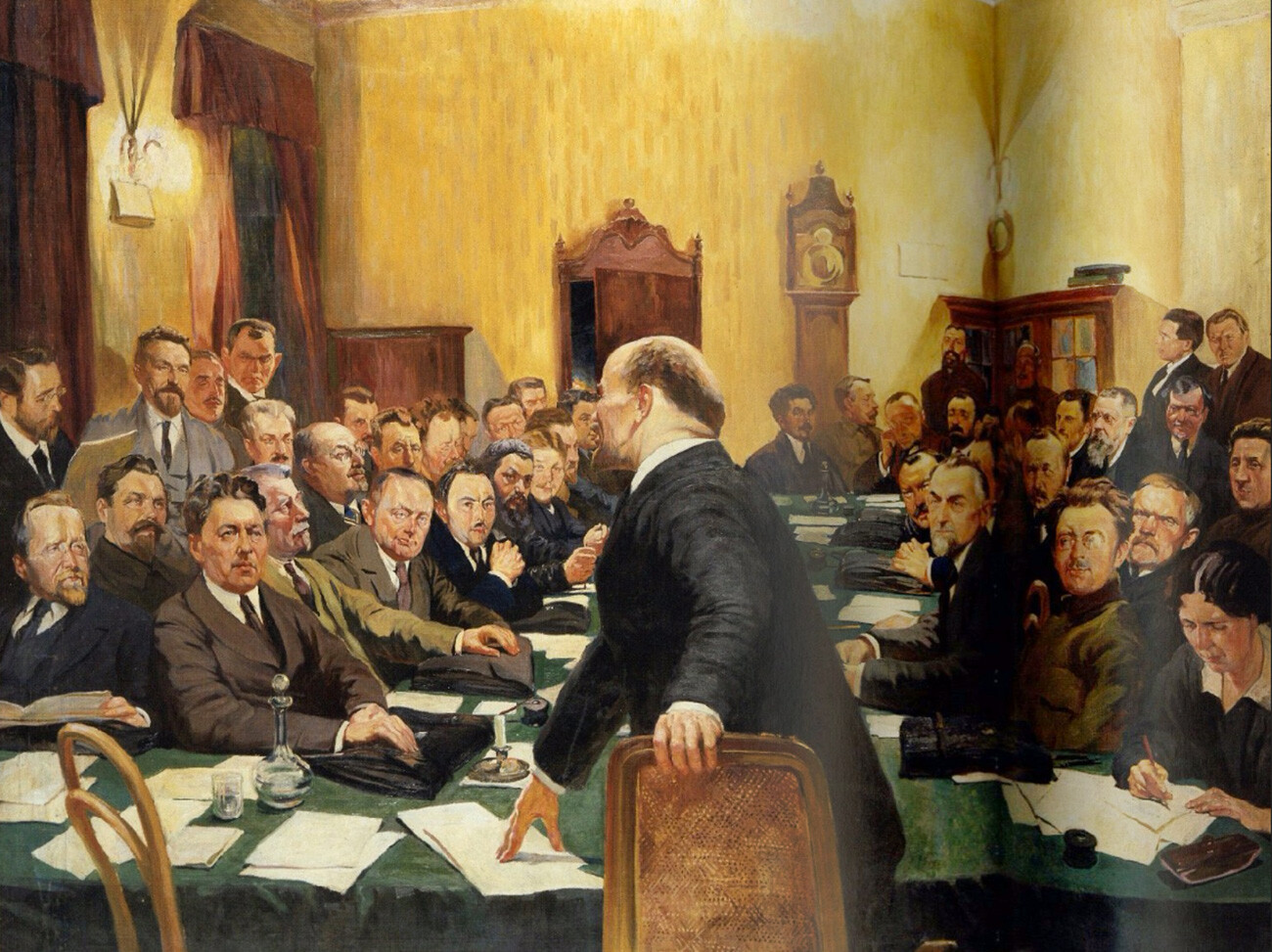
Session of the Council of People's Commissars, chaired by Lenin (1927).
Dmitriy KardovskyiThe Council of People's Commissars (Sovet Narodnykh Komissarov, abbreviated SNK) was the second most important state organ that held executive power. It was effectively the government of Soviet Russia, and Vladimir Lenin was the Chairman of The Council of People's Commissars – which meant he occupied the position of the prime minister in Soviet Russia and the USSR until his death on January 21, 1924.
Strictly speaking, Lenin never was the head of state in Soviet Russia and the USSR. He occupied the lesser position of a ‘prime minister’ that allowed him to skip all of the representative and administrative functions that the head of state was obliged to perform, including signing a great deal of documentation. Instead, Lenin could spend his time performing important decision-making functions as head of the executive power of the Soviet state.
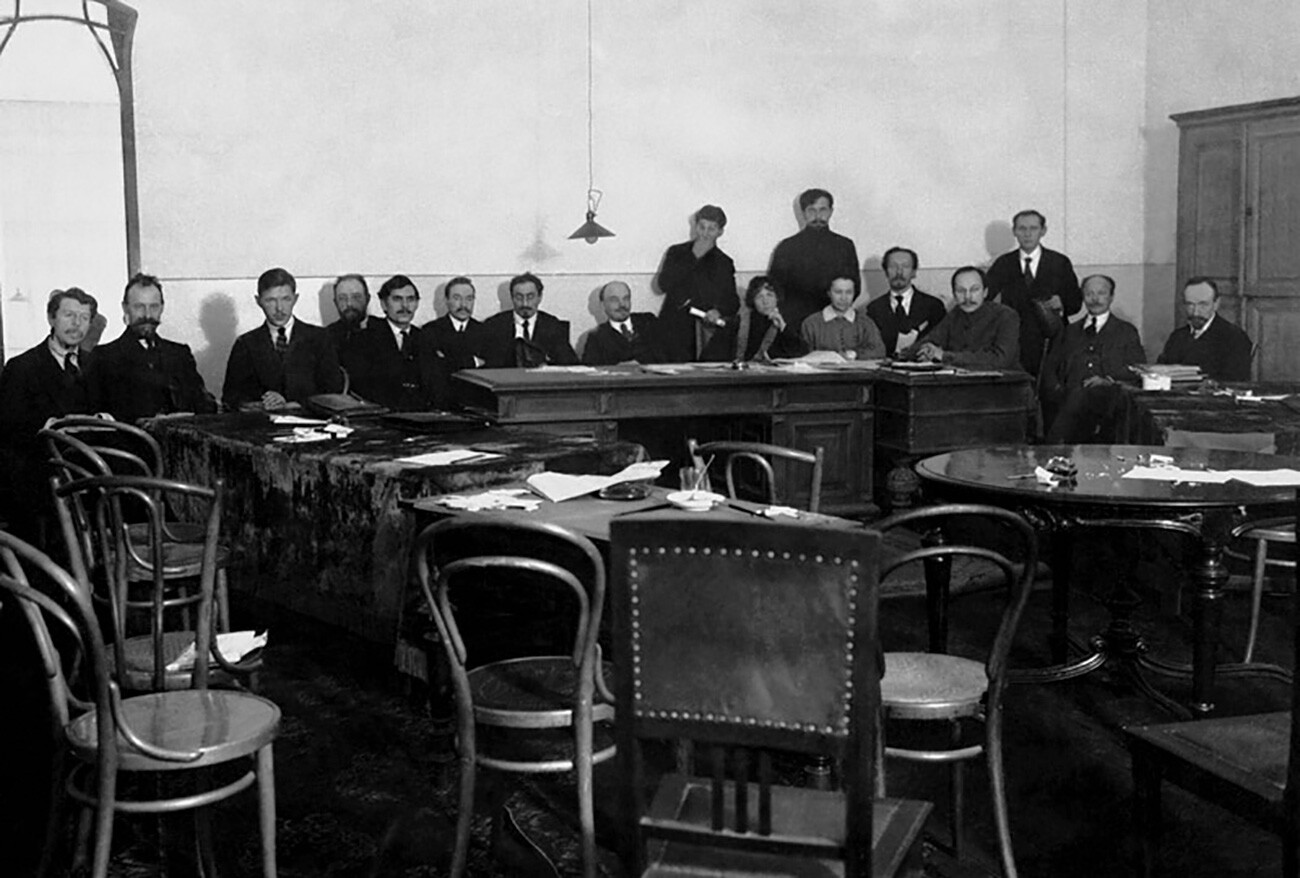
Vladimir Lenin at a meeting of the Council of People's Commissars in Smolny.
Public domainThis trend continued in the USSR. Joseph Stalin and Nikita Khrushchev never occupied the two positions of the formal head of the Soviet state – the Chairman of the All-Russian Central Executive Committee (before 1938) and the Chairman of the Presidium of the Supreme Soviet (1938-1989).
Leonid Brezhnev was the first formal and factual head of the USSR, since he was simultaneously the leader of the Communist Party of the Soviet Union and the Chairman of the Presidium of the Supreme Soviet.
If using any of Russia Beyond's content, partly or in full, always provide an active hyperlink to the original material.
Subscribe
to our newsletter!
Get the week's best stories straight to your inbox